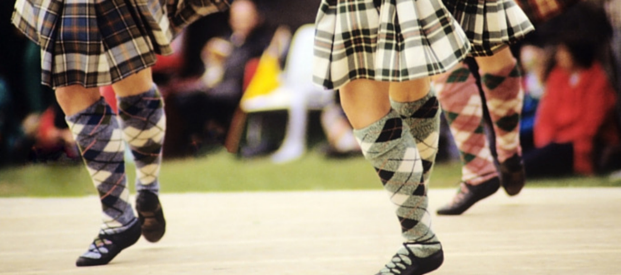The Highland Games; why every gathering of Scots is one you’ll want to be a part of
 It’s easy to be a little bit envious of Scotland – there’s a phrase used by the Scottish tourist board: “Every gathering of Scots is one that you’ll want to be a part of” and the enthusiasm is infectious. So many Scots are fiercely passionate about their heritage and both keen and proud to show their Scottish-ness at special occasions. There are few more exceptional opportunities than at the Highland Games – a country-wide, wonderful celebration of clans (and therefore kilts), Scottish country dancing, bagpipes, drumming, the caber toss and of course whisky. It’s a celebration of Scottish and Celtic culture…and it’s one that has endured for over 700 years. The game calendar commences on the second weekend in May with the Gourock Highland Games and then continues into May with a series of events held in towns, villages and cities all over the country. The games not only instil a sense of national pride, but attract tourism; making them an essential part of the Scottish economy.
It’s easy to be a little bit envious of Scotland – there’s a phrase used by the Scottish tourist board: “Every gathering of Scots is one that you’ll want to be a part of” and the enthusiasm is infectious. So many Scots are fiercely passionate about their heritage and both keen and proud to show their Scottish-ness at special occasions. There are few more exceptional opportunities than at the Highland Games – a country-wide, wonderful celebration of clans (and therefore kilts), Scottish country dancing, bagpipes, drumming, the caber toss and of course whisky. It’s a celebration of Scottish and Celtic culture…and it’s one that has endured for over 700 years. The game calendar commences on the second weekend in May with the Gourock Highland Games and then continues into May with a series of events held in towns, villages and cities all over the country. The games not only instil a sense of national pride, but attract tourism; making them an essential part of the Scottish economy.
Let the games begin… and end… and begin again!
So how did they begin? It is thought by some that the games originated in Ireland as long ago as 2000 BC and migrated to Scotland as people crossed the water in the 4th and 5th centuries. They developed within the clans: territories within Scotland were ruled over by a chief. To show allegiance to that chief and to accept the protection offered by him, you joined or were adopted by a clan. The warriors within clans would prove their physical prowess through sporting contests. They’d use whatever was available to them: so trees, stones, rope. The bravest, strongest and most entertaining man would then be chosen to represent his clan in games against representatives from other clans. The games grew in popularity but then came the Act of Proscription in 1746: Scottish dress customs and gatherings were forbidden and remained so for almost 40 years. However, once the Act was repealed, the visit of King George IV to Scotland in 1822 facilitated the revival of the games and helped romanticise the world-view of Scotland. Interestingly, the idea of wearing different patterns of tartans to represent a clan, isn’t thought to have come into play until around then.
The Royal Seal of Approval
The Highland Games at Braemar, date back to 1816 in their modern form, but it was in 1848 that it received the royal seal of approval. The games that year were delayed slightly so that Queen Victoria, who was visiting Balmoral for the first time, would be able to attend. She became patron of the games as a result, and attended annually after that. Now you can be pretty sure a member of the royal family will be in attendance at the Braemar Highland Games.
Highland Game Fame
The Highland games have become hugely popular all over the world, particularly in America. The sense of tradition and connection with the English monarchy, have tickled the American fancy for flair and fun.
The Main Events
The games aren’t just about the heavy events such as tossing the caber, putting the stone, throwing the hammer and tug of war. They incorporate a lot of culture too: piping, fiddling, highland dancing and in some places, poetry competitions too! There are events for children and adults and it’s a real celebration of all walks of life and all aspects of community. Caber toss: A long tapered pine pole or log is hoisted by the competitor, who balances it vertically holding the smaller end in his hands. The competitor runs forward attempting to toss it in such a way that it turns end over end with the upper (larger) end striking the ground first. Competitors are judged on how closely their throws resemble the 12 o’clock toss on an imaginary clock. Stone put: Just like a shot put, the stone put is thrown as far as possible from standing. The thrower is allowed to use any throwing style as long as the stone is put with one hand with the stone resting cradled in the neck until the moment of release. Scottish hammer throw: A round metal ball is attached to the end of a 4ft shaft made out of wood, bamboo, rattan, or plastic. The competitor whirls the hammer around his/her head and throws it over his/her shoulder. Weight throw: Weights are thrown over a distance or as high as possible over a bar, and there are usually two separate events: one for a light weight and one for a heavy weight. The weights are made of metal and have a handle attached either directly or with a chain. Sheaf toss: A bundle of straw (the sheaf) weighing 20 pounds (9 kg) for the men and 10 pounds (4.5 kg) for the women and wrapped in a burlap bag is tossed vertically with a pitchfork over a raised bar. Maide Leisg (‘Lazy Stick’): This is performed by two men sitting on the ground with the soles of their feet pressing against each other. They hold a stick between their hands which they pull until one of them is raised from the ground.
Interesting facts about the Highland Games
• Queen Victoria requested the games not be held in 1900 out of respect for the people who died in the Boar War (South Africa). • The Braemar Highland Games were not held in 1997 because they coincided with the day of Princess Diana’s funeral. • The visit of King George IV is commemorated by two famous landmarks in Edinburgh: George Street and George IV Bridge. • The games are claimed to have influenced Baron Pierre de Coubertin when he was planning the revival of the Olympic Games. De Coubertin saw a display of Highland games at the Paris Exhibition of 1889. Enjoy our range of Scottish Calendars which showcase the best of Scotland’s varied scenery.









